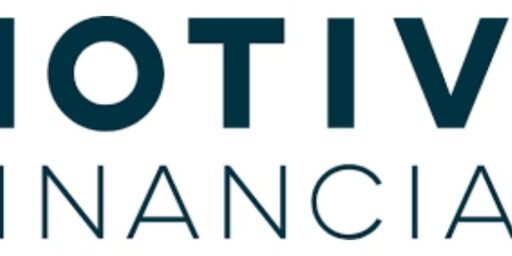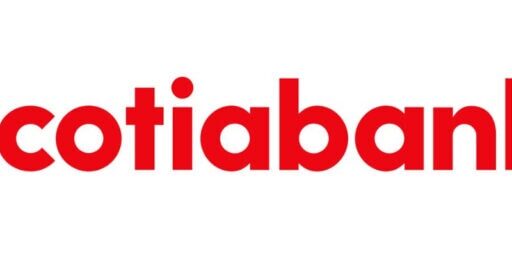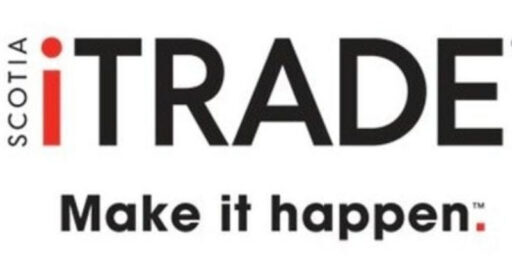RESP in Canada – Rules, Eligibility & Optimal Strategy
An RESP, or Registered Education Savings Plan, is a registered tax-deferred investment account designed to help pay for a child’s education.
In other words, RESPs are the best possible way to pay for your child’s eventual college and/or university bills!
RESPs are eligible for government grants (re: Free Money) of up to $7,200.
In this post, we’ll fill you in on all the basics of RESPs, from how (and where) to set up an RESP, and how to maximize your RESP contributions.
What is an RESP? (Registered Education Savings Plan)
Before we get into some of the RESP details, let’s nail down some RESP terminology.
There are 3 participants in any registered education savings plan:
1) The subscriber, who opens and funds the RESP. They’re often (but not always) the parent or grandparent of the beneficiary.
2) The beneficiary, who is the future recipient of the funds from the RESP. In some cases, there can be more than one per account (more on that in a minute).
3) The promoter, which is the institution where the RESP is held. They can be an online bank, a credit union, a robo-advisor, a private RESP company (not a great option) – or, my personal favourite, a super-low fee online brokerage account. Once the beneficiary enrolls in a school or training program, the promoter distributes the funds to help pay for tuition, supplies, etc.
How Do RESPs Work?
A subscriber opens an RESP account with a promoter and funds it with regular contributions. The funds are then placed in a high interest savings account to gain interest, or used to purchase a portfolio of stocks, ETFs, mutual funds, and other assets that build up tax-deferred investment gains.
RESP contributions are not eligible for tax deductions (like RRSP contributions are), but investment earnings on those contributions are non-taxable while they remain in the RESP.
Once the beneficiary graduates from high school and enrolls in a qualifying program, the promoter distributes the funds. The original money you contributed is paid out tax-free. Any income earned and government grants is classified educational assistance payments (EAPs) and are counted on the student’s income taxes for the year that they are paid out.
Not only do students have lower income levels (due to you know… going to school 8+ months per year), but they also have access to several different types of tax deductions and tax credits (usually resulting in a student paying no net taxes once they get their refund back).
Translation: The gains within your RESP AND the free money from the government grant are usually tax free!
What Can RESP Funds Be Used For?
RESPs can be used to cover more than just full-time tuition at a Canadian university. You can use it to pay for a massive variety of full or part-time programs including apprenticeships, certificate programs, and international options.
In Canada, programs that are offered by an educational institution and are at least 3 consecutive weeks-long are generally eligible. In the US, programs must be at least 3 weeks long if they’re offered by a university or at least 13 weeks long if they’re offered by another institution.
The government posts a list of designated educational institutions, which can be a helpful starting point.
RESPs are also good for other educational expenses, including books and supplies, laptops or tablets, transportation expenses, and living expenses like rent, food, and utilities. There isn’t a comprehensive list of approved expenses, so you can use your own judgement.
How to Open a Registered Education Savings Plan
To open an RESP, you’ll need the beneficiary’s SIN. A birth certificate can also be required, so it helps to call ahead or check the RESP promoter’s website in advance.
Some registered student savings plans can be opened online, especially if you choose a digital promoter without physical branches. Again, check with your specific promoter for exact procedures.
You can open an RESP at any time, but a child will only be eligible for government grants until the end of the calendar year they turn 17.
RESP Rules
Like any registered savings plan, the registered education savings plans have rules that govern how they work, how much you can contribute, and how much can be withdrawn at once. Here are the basic need-to-knows:
- RESPs have no maximum yearly contribution, but they do have a $50,000 lifetime limit for each beneficiary. That means that if one person is the beneficiary on multiple RESPs, the most the subscriber(s) can collectively contribute is $50,000 total across all accounts.
- Overcontribution leads to penalties, including 1% tax per month on the overage until it’s withdrawn. Calculation of contributions includes any funds that have already been withdrawn—you can’t start taking out payments and then top the accounts back up to $50,000.
- The Canada Education Savings Grant (CESG) is an incentive for educational savings. The Government of Canada will match 20% of your annual contributions, up to $500 per beneficiary, to a lifetime total of $7,200.
- The Canada Learning Bond is a government contribution of up to $2,000 for low-income families. The government contributes $500 in the year the RESP is opened, plus $100 in each year the child is eligible until they turn 15.
Types of RESPs
There are 3 kinds of registered education savings plans, each with their own set of rules.
Individual RESPs are set up for a single beneficiary. They can be set up by anyone, for anyone – uncles, aunts, family friends, yourself, at any age. As long as the money is used for post-secondary training or education from a qualified school, it’s fine. Individual RESP contributions can make a great birthday or Christmas gift if you’ve got a kid in your life who really does NOT need another video game.
Family RESPs are generally used for a family with more than one beneficiary. One advantage of a family RESP is that if one child chooses not to pursue post-secondary education, the money is available for another child to use. Family RESPs must be set up by a direct family member (parent/stepparent/grandparent). You can’t set up a family RESP for the child of your oldest friend, or for yourself, for example.
Group RESPs are set up to pool contributions from more than one family, typically with only one child per family as a beneficiary. When the time comes to close the RESP, the funds are divided and distributed as annual payments.
Generally, Group RESPs are a bad idea because of all the fees involved – steer clear and keep everything under your personal control!
How to Maximize RESP Contributions
While RESPs have no annual contribution limit and have a lifetime cap of $50,000, there are still strategies for maximizing your RESP contributions.
The Canada Education Savings Grant will match 20% of your annual contributions, up to $500 per beneficiary per year, so it’s in your best interest to contribute $2,500 of your own money each year. That amounts to about $208 per month for each beneficiary.
At this rate, you’ll reach the maximum limit for your CESG ($7,200) in 14.4 years, so the ideal strategy is to take advantage of that as early as possible and allow the grant money to be invested and grow as much as possible before the beneficiary needs to start withdrawing the funds.
You can check how much RESP contribution you have by calling the Canada Education Savings Program (CESP) at 1-888-276-3624. You can also contact your RESP provider (they often include contribution room details on quarterly statements) – but keep in mind that they may not be aware of multiple RESP accounts if you or another family member have set up more than one RESP account for a child/family.
How to Withdraw From a RESP
The ideal amount to withdraw from the RESP each year will vary depending on the beneficiary’s income level. The goal is to remain below the beneficiary’s basic personal amount (the amount of income the government allows before charging income tax).
If the student has a part-time job, they’ll be able to take out less money per year than they would if they weren’t working.
If the beneficiary decides not to pursue post-secondary education immediately after high school, that’s fine. RESPs can stay open for up to 36 years, so they can take their time!
If you’re sure the beneficiary won’t be using the money in the RESP, you can transfer it to another RESP (as long as you don’t exceed the maximum lifetime contribution) or an RRSP (as long as you have contribution room—more on this later).
If there isn’t another account you can/wish to transfer to, you can close the RESP. At that point, any remaining grant money would be returned to the Government of Canada, and the rest of the money would go to the RESP subscriber as long as all of the following rules apply:
- All beneficiaries are at least 21 years old and are not eligible for an EAP.
- The subscriber is a Canadian resident
- The RESP was opened at least 10 years earlier.
The money will be taxed at your regular income tax rate, plus an additional 20%, so avoiding this is ideal. Procedures can vary between providers, so be sure to check your paperwork or ask your promoter for more specific details.
Alternatively, you can transfer the funds to an RRSP – tax free – this is usually your best bet if you have RRSP contribution room.
Where to Invest Your RESP Contributions
Like with many investment accounts, you can choose how involved you want to be in managing your RESP portfolio.
A traditional bank or credit union will invest your contributions for you – but will also charge a hefty fee.
A robo-advisor-based RESP has lower fees and will give you a standard portfolio based on your preferred level of risk. You don’t have to be an investment expert or worry about buying and selling assets yourself.
We recommend Wealthsimple Invest for any robo-advisor accounts, including RESPs. You can learn more in our Wealthsimple Review.
A self-directed RESP account has the lowest fees (which is what I personally use), but you’ll have to know what you’re doing (or be willing to learn) to make your investments successful.
A good choice is a discount online broker like Qtrade, which offers RESPs. You can learn more in our Qtrade review, or you can check our post on the Best Online Brokers in Canada to look at some other options.
If they’re handled right, any of these options can get you the returns you want on your RESP investments – it really comes down to how much management you want to do (and how much you want to pay in fees).
RESP Investment Strategy: A Set Timeline, Shifting Risk Levels
It’s normal for asset allocation to shift as your child grows up:
- From ages 0-8, you’ll want to focus on growth. Growth-oriented portfolios come with greater risks, but even if something goes wrong and values drop, the account has time to recover.
- From ages 9-13, you’ll want to shift your assets to a more balanced allocation. You have less time to recover from losses at this point, so a focus on balanced or even lower-risk assets is wise.
- From ages 14-18 and beyond, you should focus primarily on limiting your risk, as your child will need the money before too long, and you want to make sure it’s there for them. Safety first.
RESP Benefits
There’s really no need to look at an RESP pros vs cons list, as I honestly see very little “cons” to consider. I guess technically if you were to overcontribute to your RESP that could be a con. But really, RESPs are an excellent bang for your buck, and can really supercharge your university savings strategy.
The main RESP benefits are:
- $7,200 in free government money (Canada Education Savings Grant).
- Possible additional free government money (Canada Savings Bond).
- Tax-free investment returns from investing that free government money before it gets taken out to pay for school.
- Tax-free investments returns from your own money that you have contributed to the RESP before it gets taken out to pay for school.
- Even when the CESG and the investment returns get taxed, it is taxed in the hands of a student (who is usually low-income and unlikely to pay much tax).
- You don’t have to go to a big university to access an RESP – there are a ton of programs that make you eligible.
- Even in a worst-case scenario where a child doesn’t go to university (and the RESP can remain open for quite a long time) you can roll your own money that you had contributed to the RESP back into your RRSP.
RRSP or RESP?
Registered Retirement Savings Plans (RRSPs) are tax-sheltered accounts designed to help Canadians save for retirement. You do not pay taxes on your contributions to your RRSP, but you do pay tax on any withdrawals later in life. Since retirees tend to have lower incomes, this tends to mean a lower total tax bill.
But which account should you prioritize when you’re planning your contributions? Many families don’t make enough to significantly contribute to both RRSPs and RESPs monthly, and that means making a choice.
Which account you should prioritize is going to depend on various factors including (but not limited to):
- How much you and your partner make
- How old your child is/children are
- How old you are
- Whether you have any retirement savings already
You can maximize your CESG payment with an RESP contribution of $208.33/month. If you already have some retirement savings, you may want to prioritize getting as much of that RESP grant money as you can. This automatic 20% investment return is tough to beat!
On the other hand, if you don’t have much retirement savings, you may want to prioritize your retirement fund. RRSP contributions are tax-deductible, and you can always take that tax refund and put it towards your RESP(s).
Those are just two examples —every situation is different, so it helps to be clear on your priorities and your specific circumstances.
Another thing to remember is that you can transfer up to $50,000 from an RESP to your RRSP on 3 conditions:
- The RESP must have been in effect for 10 years, minimum
- All beneficiaries must be at least 21 and not pursuing higher education
- You must have enough RRSP contribution room
All grant money will be returned to the government, but your RESP contributions and the income they’ve earned can be transferred.
Catching Up On RESP Contributions and Free Money
A friend of mine, Gary, recently asked me about RESP contributions and if it’s too late to get started. Gary’s kids are 14 and 12, and while a bit late in the game, there is still time to take advantage of free government money.
As outlined above, opening an RESP when the child is born and contributing $2,500 would result in $500 in free money from the government. Doing this every year for 15 years would result in maxing out the government freebie ($7,200 max).
But what if you are a bit late getting started? The bright side is that if you need to catch up, the government will allow you to carry forward your CESG room.
How much?
You can “catch up” and snag the CESG for one additional year, plus the current year. In other words, the RESP carry forward rules state that you can get up to a maximum of $1,000 in CESG in a year. So essentially, contributing $5,000 will max out the current year’s and the previous year’s CESG.
Although RESP accounts have the ability to carry forward contribution room, it’s best not to wait too long, as there is a cut off at the end of the calendar year that the student turns 17.
Gary’s Situation
Even with kids that are a little older (14 and 12), with the ability to carry forward one year of unused CESG, Gary can still get some serious CESG money from the government.
For the 14-year-old, provided that Gary opens an account in 2024, and there is no increase to RESP contribution or CESG rules, then this is what the math would look like.
| Contribution | CESG | |
| 2024 (age 14) | $5,000.00 | $1,000.00 |
| 2025 (age 15) | $5,000.00 | $1,000.00 |
| 2026 (age 16) | $5,000.00 | $1,000.00 |
| 2027 (age 17) | $5,000.00 | $1,000.00 |
| Total | $20,000 | $4,000 |
As you can see, provided that Gary can put away $5k/year for the 14-year-old, he can obtain $4k in free CESG money. Given that Gary could probably get close to 5% right now buy using a cash ETF or by choosing from the best GIC rates in Canada, Gary could use that government money to snag another $1,500+ in interest over the next four years too. Earning interest on your “free government money” (the CESG) is almost as good as the original free grant cash you got!
Technically someone will have to pay tax on this interest income – but that someone is very likely to be a student that is not earning a lot of income, and consequently is unlikely to pay any tax at all on it.
In case you were wondering, using our 5% investment return figure, we can estimate Gary would have over $34,000 ready to go by the 14-year-old’s first year in university. The benefits don’t end there however, as that student is likely to slowly whittle down the account over 4-5 years, so even more compound interest could be gained in that time.
Not bad for $20,000 of invested cash and very little risk!
For the 12-year-old, provided that Gary opens an account in 2024, here are the contributions and maximum CESG until age 17.
| Contribution | CESG | |
| 2024 (age 12) | $5,000.00 | $1,000.00 |
| 2025 (age 13) | $5,000.00 | $1,000.00 |
| 2026 (age 14) | $5,000.00 | $1,000.00 |
| 2027 (age 15) | $5,000.00 | $1,000.00 |
| 2028 (age 16) | $5,000.00 | $1,000.00 |
| 2029 (age 17) | $5,000.00 | $1,000.00 |
| Total | $30,000 | $6,000 |
Provided that Gary can put away an extra $5k/year for the 12-year-old, he can obtain $6k in free CESG money.
Using some similar RESP calculations as we did for the 14-year-old, we can say that the 12-year-old is likely to make an additional $9,000 in interest cash just on the CESG money alone (if we allow for withdrawing the money over 4-5 years).
Gary could generate an RESP portfolio of over $50,000 for day 1 of university for this younger child by investing $30,000 over the next six years and getting current interest rates. Admittedly interest rates might go down a bit over the next few years, but regardless, this is a pretty great outcome. Even at 3.5% interest, Gary’s youngest would have about 48,000 waiting for them.
Doing a little math by looking at the tables above, it’s apparent that age 10 is the latest age you can start an RESP and still max out the CESG ($7,200).
Superfunding My RESP Account Contributions With More than $2,500 At Birth!
In an excellent example of, “and the rich get richer” here’s how folks with an “extra $16,500” in their couch cushions upon the birth of their child can really maximize their RESPs benefits over the long-term.
Here’s the step-by-step thought process you should follow:
- You can contribute a total of $50,000 lifetime to each child’s RESP.
- You can contribute more than $2,500 per year – $2,500 is just the minimum account in order to get the maximum annual CESG money from the government.
- There is no penalty for contributing more than $2,500, or even $5,000 per year.
- In order to get the maximum $7,200 in CESG from the government, you need to contribute $36,000 over 15 years.
- That still leaves you with $14,000 of “extra” RESP contribution space that could be titled, “Money you can put into an RESP – and it will grow tax free – but you won’t get any CESG bonus money for it”.
- In a perfect world, a parent gets that $14k into play ASAP in order to maximize investment gains that are likely to be very-lowly taxed in the hands of a young student one day.
- So, ideally, in a child’s first year, a parent could contribute $16,500 to their RESP – getting the $500 in free CESG money with the first $2,500 contribution – and then an “extra” $14,000.
- If we assume a 5% investment return (sure interest rates might go down, but you could take a little more investment risk with this account in the beginning due to the long time horizon) this original $16,500 + $500 CESG in year 1, would grow to about $40,000 by Year 18 when the child was ready to go to school.
- Just for kicks, if we assume that another $2,500 + $500 CESG gets added over the next 15 years, we could easily be looking at an eventual RESP in the $110,000+ range (with only $50,000 of my money put in).
Now hey – let’s be real here – very very few parents have extra money lying around when their families are young.
I just wanted to make people aware of this for two reasons:
1) Compound investment returns in a tax-free account are awesome. The math doesn’t lie.
2) There are many grandparents out there that want to spoil their grandchildren. My own parents are great examples of this. Getting the grandparents to give a bit of an inheritance early, or to prioritize RESP contributions as early birthday presents, are really incredibly long-term planning advantages if the folks involved can afford it.
RESP Investing Strategy – FAQ
Which RESP Is Best?
Every year I get several parents emailing me asking some version of, “Which RESP is best?”
This is like asking “Which RRSP is best?”
The truth is that you’re asking the wrong question!
An RESP is just a special investment box that the government lets you put investments into so that they don’t get taxed.
Now, there are several companies out there who will say that they “sell RESPs” because they are trying to capitalize on folks’ financial illiteracy. They market themselves as a one-stop-shop, offer a great sales pitch, and parents generally leave feeling like they made a big difference.
The issue is that what has usually happened before the students walk out of these “RESP companies”, is that families have locked themselves into plans that take their money, invest it in high-fee mutual funds, and have some very harsh penalties if any of the many contribution rules are infringed upon. These plans are an awful value – avoid them.
You’re way better off opening your own RESP at one of Canada’s best online brokers. It’s quite easy, and if you have your child’s SIN card in hand, it shouldn’t take more than 20 minutes.
Once you have successfully opened an RESP, you can transfer money from your main chequing account, watch for your CESG money to roll in, and choose a Canadian long-term investment strategy that makes sense for you.
What are the new 2024 Canada Learning Bond Rules?
In early 2024 the Trudeau government announced that beginning in 2028, all four-year-olds would automatically have an RESP opened for them, and that auto enrollment will extend to the Canada Learning Bond (CLB) as well.
That Canada Learning Bond will be $500 of “free government money” deposited in the four-year-old’s RESP and then an additional $100 put in every year up to age of 15 – for eligible families. (To be eligible for the Canada Learning Bond, families must be below a specific income – usually somewhere between $50,000 and $60,000, but it depends on a few variables).
Is an RESP Worth It?
A Registered Education Savings Plan (RESP) is a smart way to maximize your savings for a child’s education.
With tax-deferred earnings and government contributions, an RESP can give its beneficiary a massive head start on paying for school and help minimize their student loans.
Even if your children are heading into their teenage years, it’s not too late to start saving for their education. Selecting the right RESP investment strategy is the icing on the cake – don’t allow a paralysis by analysis to kick in!
I've Completed My Million Dollar Journey. Let Me Guide You Through Yours!
Sign up below to get a copy of our free eBook: Can I Retire Yet?











Can I move my son’s RESP to a RDSP? He’s 21,
Not to my knowledge Naomi.
As Grandparents who have assumed full responsibility for RESPs for two sister/grandchildren after assisting their parents to abandon a poor arrangement with an all too wellknown “company”, we discovered the following. The Federal Government will NOT provide us with information needed to ensure we do not over contribute and to ensure we maximize the available grants. We must go through the registered guardian. And the Federal Government deems the wise decision to abandon the contract with the “company” as withdrawal not as an obvious bonafide transfer to a self-directed family plan. The granted funds were returned to the Federal Government and forever lost to our Granddaughters. Be careful.
1. What about when the beneficiary does not Join the secondary or post secondary instiution that does not qualify for RESP?
2. What if the beneficiary decease or leave the country?
What happens then?
Hi Sung,
1) First off – there are many many different types of educational paths that allow for RESP funds to be used (and they can be accessed for many years after a child turns 18). BUT – if everyone is sure that the beneficiary will never go to any type of RESP-eligible education, then parents can roll money into their RRSPs, only losing the government grants and investment gains.
2) If the beneficiary unfortunately passes away, the susbcriber can designate a new beneficiary – or collapse the plan in the way described in #1. RESPs can be used to pay for education outside of Canada – so you’re good there!
Which funds I can follow which has these distributions for RESP? I am trying to open one for my daughter but my doesnt seem to have a fund which does this kind of distribution.
Any funds which you guys can recommend here?
After reading many posts surrounding RESP portfolio strategies, I decided to share with you the strategy I build for my 9 month old. Here it is:
33% CDZ.TO
18% CEW.TO
12% VGG.TO
9% XEF.TO
8% ZLU.TO
8% ZSP.TO
5% XCB.TO
4% XEC.TO
3% HFR.TO
I have been a TD/Canada Trust customer since the early 1980’s, both personal and business. I recently opened a RESP for my Grandson and was blindsided when I was told that I needed TWO RESP accounts – one for the self-administered individual mutual fund and one for a term GIC. The policy is that all grants other than the CESG must go into the Term GIC account and remain in that account until he withdraws the funds or the account is collapsed!
In this case, the GIC account would start with $1,100.00, gain $100 per year (CLB) and another $300 (A-CESG) over the next 14 years – not insignificant to me.
Unless you want your RESP, and Government Grants to be invested in a Term GIC, beware of TD Canada Trust’s RESP !
If you want your RESP invested in mutual funds, if you want to receive Government Grants that are available (beyond the CESG), and, do not want a RESP account plus a Term GIC account (yes, two accounts!), look at either Royal Bank of Canada, Scotia Bank, CIBC or Bank of Montreal and not TD Canada Trust!
TD Canada Trust’s policy dictates that if you wish to receive Government Grants such as the a-CESG, the Canadian Learning Bond, Quebec Education Savings Incentive, or the Alberta Centennial Education Savings Grant, they will only process the applications if the funds from these Grants are placed into a Term GIC. And, these funds cannot ever be rolled into your mutual fund RESP or transferred.
You have no choice in this !
With TD Canada Trust, if you wish your TD Canada Trust RESP be invested in Mutual Funds, and, you also wish to receive Government Grants beyond the CESG, you must have two RESP accounts (imagine the headaches for you the subscriber, and also the problems when the beneficiary begins his or her post-secondary education) with this. You have no choice with TD Canada Trust.
Royal Bank of Canada, Scotia Bank, CIBC or Bank of Montreal do not have such a restrictive policy.
@Steph how can one contribute only $25 when each fund costs roughly $10 and the couch potato method uses 4 funds? 25 divided by 4 would not allow for the purchase of a single share of any e-series fund…
@Baalat, the minimum is only $25 per transaction if you set up a pre-authorized purchase plan (PPP). I set up a monthly PPP based on my desired allocation and then plan to use birthday (July) and Christmas money to rebalance (manually).
@jodi, once you open an account with one of those RESP scholarship companies, you are obligated to make the payments. Personally, if you don’t have the cash to contribute, then don’t. Perhaps you can take cash gifts etc to put towards their education.
@Balaat, I do everything manually as well. All cash goes directly into a money market fund initially, then I rebalance as I see fit with the new cash.
@Peter @FrugalTrader: I have the same question. According to TD e-series rules the minimum ammount to buy each time is $100. So if you contribute $2500 per year (to maximize grants) and have 4 e-funds to distribute it would be $625 per fund, or a maximum of 6 transactions per fund ($104.17 each) per year. What I have not found is a way to make it automatically with e-funds (will we have to do it manually, each 2 months?)